Forum of Caesar
Italian Version Below*
What is the difference between the Roman Forum and the Imperial Fora?
Why we are always too confused about it?
The Roman Forum is considered to be the first public space in Ancient Rome, the first city “square”, born around 600 BC and used for economic, political, and social meetings.
After centuries and centuries of vicissitudes and buildings, Caesar decided to expand the area with the same “public and social” concept by building the first of the so-called “Imperial Fora” at his own expense. (Cesare, Augusto, Vespasiano, Nerva and Traiano).
And with Caesar, our problems begin!
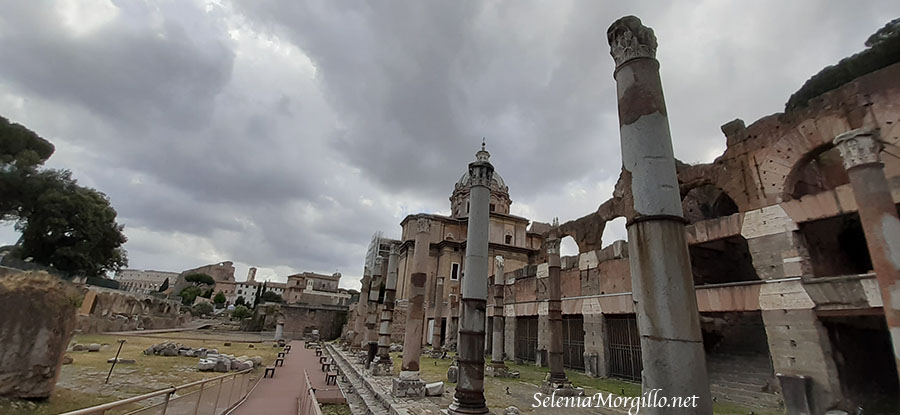
We call them Imperial Fora, but we know well that Caesar was not the first Roman emperor, but one of the most illustrious generals, elected during his brilliant career “dictator perpetuus” (dictator for life). The first Roman emperor will be his adopted son, Octavian (later becoming Octavian Augustus) from 27 BC.
Caesar commissioned his trusted friend Cicero to buy at his expense, for an exorbitant amount, between 60 and 100 million sesterces, the land on which to build the Hole that would have been named after him.
In theory, there was a need to renew the administrative and judicial structures, in practice, Cesare wanted to make that place a huge self-celebration in competition with his rival Pompeo who had recently monumentalized the area of Campo Marzio with a new theater.
Nothing was left to chance. Starting from the precise place to express, between the Capitol and the Suburra (today the Monti District), Cesare’s birthplace.
The project started in 54 BC, the inauguration took place in 46 BC but the works ended only after Cesare’s death.
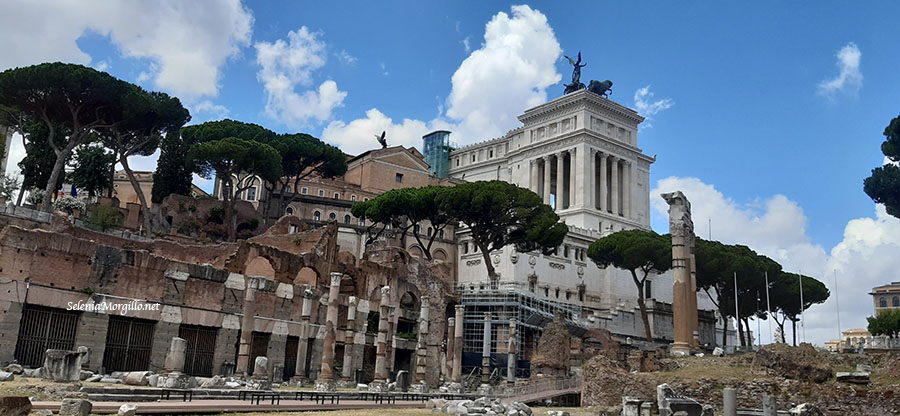
An immense rectangular square of 100x50m was built, paved with travertine slabs and colonnaded porticoes on three sides. At the center of the square stood the equestrian bronze statue of Caesar, lost over the centuries but widely cited by sources.
The terminal part of the square was closed prospectively by the temple dedicated to Venus Genetrix, the mythical ancestor of the lineage of Caesar. The temple was entirely rebuilt by Trajan in the 2nd century AD and later damaged by the deep fire of 283 AD. Today three columns are visible, raised with part of the entablature in 1933.
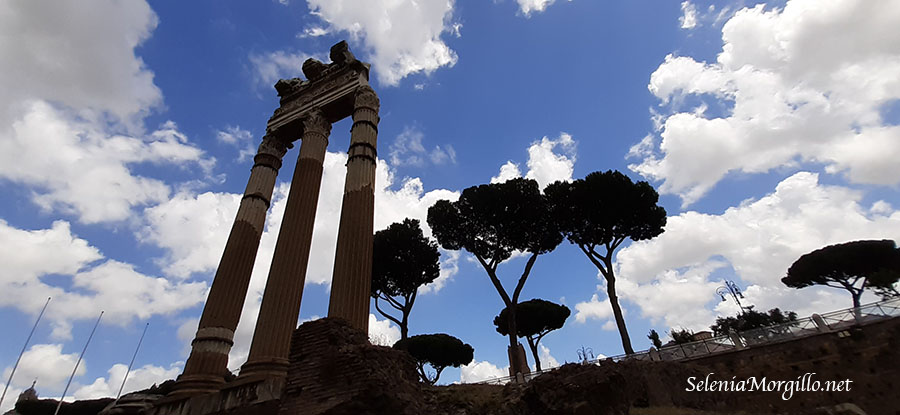
The Forum of Caesar was embellished with important artistic works, with the idea to represent a “modern museum open to the use of the people”.
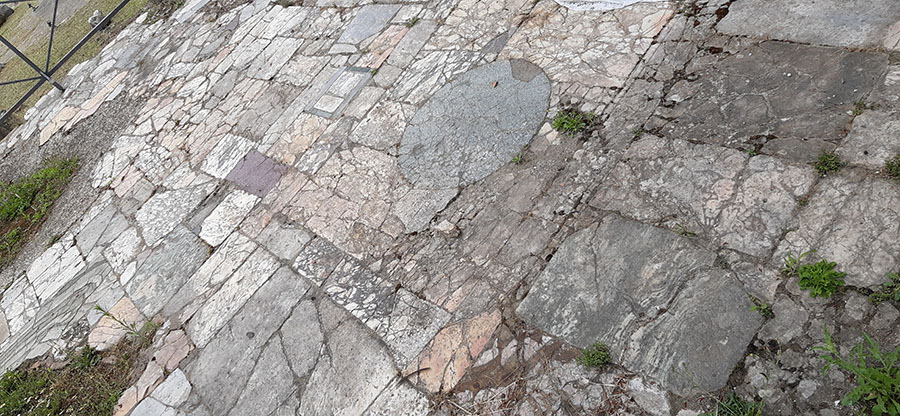
From Cesar’s Fora in two centuries the area was completed with the Forum of Augustus, the so-called Temple of Peace built by Vespasiano, the Forum of Nerva or Transitorio, and finally the largest of all that of Trajan with the majestic Column, still visible.
All rights reserved*
InfoSite: MuseiinComune
Follow me on Instagram: Selenia_EyeonArt
Qual’è la differenza tra il Foro Romano ed i Fori Imperiali? Perchè si è sempre troppo confusi in merito?
Il Foro Romano è considerato come il primo spazio pubblico di Roma Antica, la prima “piazza” cittadina, nata intorno al 600 circa a.C.ed utilizzata per riunioni di carattere economico, politico e sociale.
Dopo secoli e secoli di vicissitudini e costruzioni, Cesare decise di ampliare la zona con il medesimo concetto “pubblico e sociale” costruendo a sue spese il primo dei cosiddetti “Fori Imperiali”. (Cesare, Augusto, Vespasiano, Nerva e Traiano).
E con Cesare iniziano i nostri problemi!
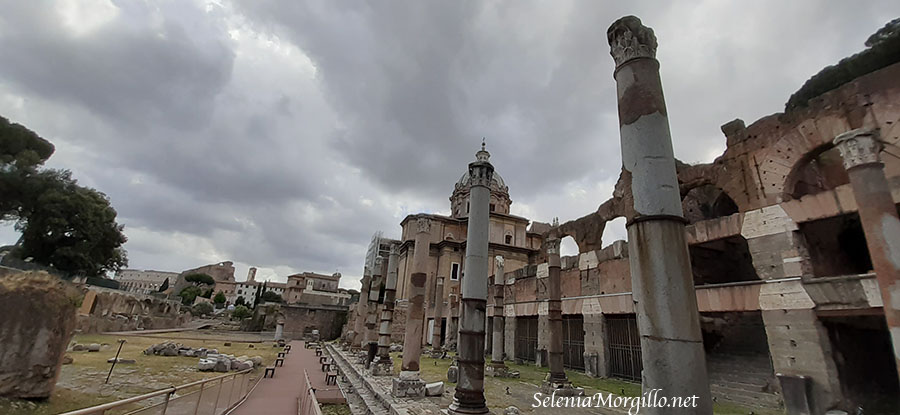
Li chiamiamo Fori Imperiali, ma sappiamo bene che Cesare non fu il primo imperatore romano, bensì uno dei più illustri generali, eletto nel corso della sua brillante carriera “dictator perpetuus” (dittatore a vita).
Il primo imperatore romano sarà suo figlio adottivo, Ottaviano (poi divenuto Ottaviano Augusto) dal 27 a.C.
Cesare incaricò il fidato amico Cicerone di acquistare a sue spese, per una cifra esorbitante, tra 60 e 100 milioni di sesterzi, il terreno su cui realizzare il Foro che di lui avrebbe avuto il nome.
In teoria c’era necessità di rinnovare le strutture amministrative e giudiziarie, in pratica Cesare voleva fare di quel luogo una grandissima autocelebrazione in competizione con il suo rivale Pompeo che aveva da poco monumentalizzato l’area del Campo Marzio con un nuovo teatro.
Nulla fu lasciato al caso. A partire dal luogo preciso da esproriare, tra il Campidoglio e la Suburra, quartiere natale di Cesare.
Il progetto iniziò nel 54 A.C., l’inaugurazione avvenne nel 46 A.C. ma i lavori terminarono solo dopo la morte di Cesare.
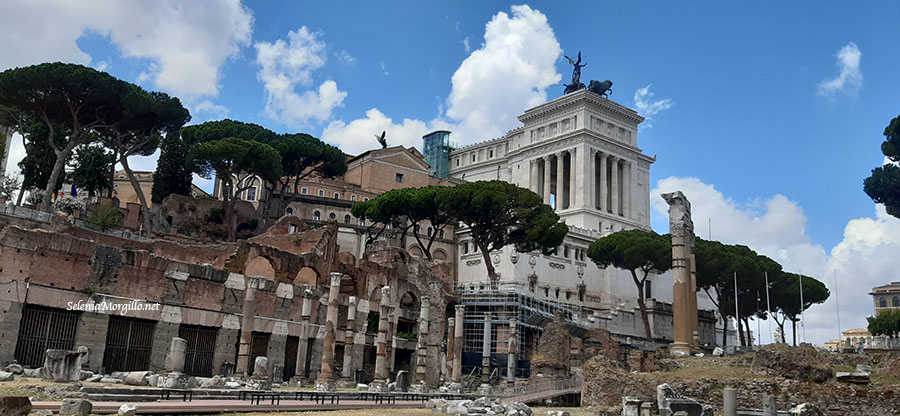
Fu realizzata una immensa piazza rettangolare di 100x50m, pavimentata con lastre di travertino e con portici colonnati su tre lati. Al centro della piazza si ergeva la statua equestre di Cesare in bronzo, andata perduta nel corso dei secoli ma ampiamente citata dalle fonti.
La parte terminale della piazza era chiusa prospetticamente dal tempio dedicato a Venere Genitrice, mitica antenata della stirpe di Cesare. Il tempio fu interamente ricostruito da Traiano nel II secolo d.C. ed in seguito danneggiato dal profondo incendio del 283 d.C. Oggi sono visibili tre colonne, rialzate con parte della trabeazione nel 1933.

Il Foro di Cesare era impreziosito di importi opere artistiche, con l’idea di rappresentare un “museo moderno ed aperto alla fruizione del popolo”.
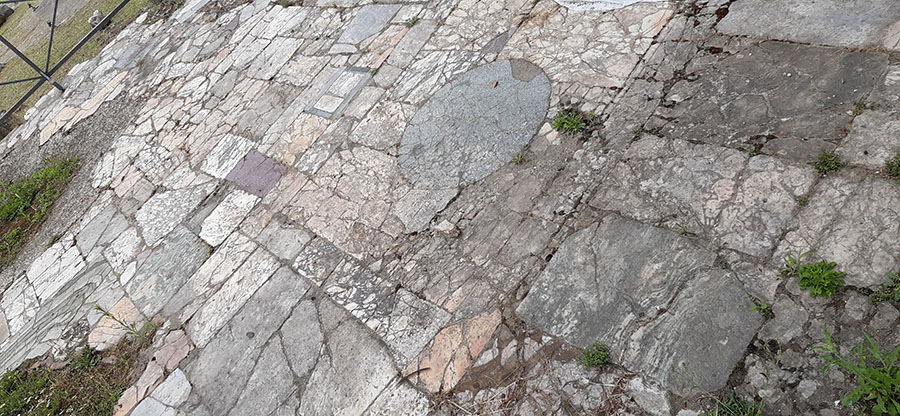
Sul modello del foro cesariano nel corso di due secoli nell’area sorsero, il Foro di Augusto, il c.d. Tempio della Pace costruito da Vespasiano, il Foro di Nerva o Transitorio ed infine il più grande di tutti quello di Traiano con la maestosa Colonna, visibile tutt’ora.
InfoSite: Museiincomune
Segui la mia pagina Instagram: Selenia_EyeonArt
Tutti i diritti sono riservati. E’ vietata qualsiasi utilizzazione, totale o parziale, dei contenuti inseriti nel presente portale, ivi inclusa la memorizzazione, riproduzione, rielaborazione, diffusione o distribuzione dei contenuti stessi mediante qualunque piattaforma tecnologica, supporto o rete telematica, senza previa autorizzazione scritta di Selenia Morgillo.
2 Replies to “Forum of Caesar”
Beh per quanto riguarda il Foro
Precisa e coincisa
Lettura Molto Interessante approfondirò il resto
TOP!!!
Grazie mille! Il blog è in continuo aggiornamento. Lo scopo principale è di educare all’arte ed appassionare i lettori.